Author: CaptainNemo
Hello everyone,
today, we have a nice guest article by Captain Nemo about the real vehicle project, that is in game known as the GW Tiger. I was actually quite impressed by the level of detail Nemo managed to get. Enjoy!
I knew starting off that doing a “short” article on this subject would be hell and thought I might be well prepared for it. I was wrong on that account as even now I am dragging narrow snippits out of the mud and half-mentioned “in-passing-references” which various authors never knew would be important to somebody in the future. I would like to thank Senior Engineer Arnoldt, leader of the Henschel firm’s Haustenbeck Experimental Department at the tank test station for providing key information that the British thankfully recorded in their reports on technical equipment. Without the obscure information I would have a had much bigger black hole then I already have. Although I have yet to find a record of Mr. Arnoldt’s first name. In any case thank you Mr. Arnoldt for the records.
CaptainNemo.
On the 6th of May 1942, Krupp presented the first proposals for an armored self-propelled carriage (gepanzerte Selbstfahrlafette) for mounting either a 17cm Kannone K72 (Sf) L/50 or a 21cm Mörser 18/1 L/31 (some sources say L/30, L/31, or L/32 but it’s all about where you measure from and I use L/31 here). The recoil system was to be the same double recoil system used by towed artillery (not sure 100% if this includes the not so towed artillery that had to be broken down into loads but I suspect it is) such as the upper limit on towed artillery, the 21 cm Mörser 18 L/31, which still had to be split into two loads to be moved.
Now to make the best use of this new SPG it was decided that the vehicle would lower a base plate off the back of the vehicle and the gun removed from the vehicle to allow for all around 360° fire on what was essentially a pedestal mount up front under the front of the gun and a manoeuvrable rear rest. This would allow the rear of the gun to be quickly swung into any direction since most of the weight of the gun was supported on the base place. The base plate was to be carried/hanged off the back of the vehicle. The reasoning behind this was mandated so that the GW Tiger could be used in the costal defense role and having the base plate would allow for clear firing in all directions which was not a new idea. (It had been used on rail guns on rails and rail guns transferred to concrete fixed emplacements) but what was new was putting such a large gun on a tracked vehicle, giving it the ability to move reasonably well, and then setup to fire on a 360° mounting without the extensive amounts of time previously needed with railways guns, of such large calibers and power, to setup and prepare the mounting or be restricted by the limitations of a railway network.
I mention the date at the start of the article because it is mentioned in what little source material there is for the GW Tiger. What is not always mentioned is the poor state of development (mechanically) that the Tiger tank was in at the time of the rather ambitious proposal from Krupp. In May on 1942 the engines were hardly working on the test stands, hulls were mostly on schedule as were the turrets but production was halted several times to adding modifications to the design and the first completed vehicle was tested in April. Such production plans incudes the sudden shift from a 50/50 split of hull production of hydraulic and electric transmission hulls to a nearly all electric transmission hulls which annoyed the hell out of Krupp on top of a laundry list of changes from Porsche for both turrets and hulls. Krupp was informed of this lovely change on the 8th of May just 2 days after his proposal. Krupp had set up his production line for the hulls to conform to the original 50/50 split of hydraulic and electrical transmissions which used slightly different configurations in the hull to fit the components.
With all of this going on the proposed SPG was ordered to be done by November. But even Krupps planned production of hulls all to the electric transmission design never took off with production grinding to a halt in July of 1942. It is all the more remarkable that any of the Tiger (P)’s made it to testing grounds at all on top of the remarkable plans to rush 10 Tiger (P)’s to North Africa to support and reinforce Erwin Rommel. Ironically theses Tiger(P)’s would have made it to North Africa if not for mechanical problems occurring in the transmission. Contracts were issued for the 17cm Kannone K72 (Sf) L/50 in August of 1942.
In November of 1942 it was decided to use SM-Stahl (carbon steel) in the construction of self-propelled guns in general and that armor plate in the construction of the Versuchsfahrzeug (experimental vehicle) chassis. It was also decided that the front plate of the GW Tiger would be changed from 30mm of Armor plate to 50mm of carbon steel which added 1.5 metric tons to the weight of the SPG and the sides would be 30mm of carbon steel.
And then, after November 1942, the trail of information about the GW Tiger ends for an entire year when it was decided that instead of using the Tiger I’s engines, suspension, steering, and transmission for the GW Tiger, the GW Tiger would use the upcoming and more advanced Tiger II’s components. (Not 100% sure if it used the Tiger II’s chassis I am looking at photos to confirm.)
The components were scheduled for delivery by January 1944 and like all German delivery schedules tended to slip towards the end of the war but were surprisingly able to be maintained for the most part. It would not be uncommon to have badly needed parts for projects like the GW Tiger be redirected to the frontline repair depots and thus put the project further behind schedule simply (most likely) because of its lack of a high priority.
On 25th September of 1944 Reichsminister Albert Speer ordered the demonstration to Hitler on 15 January 1945 as soon as the GW Tiger was completed at the end of the year. Serial production was to then start at the rate of two per month. But with all of the bombing going on in Essen, Krupp on 7th December 1944 reported that the GW Tiger was ready to be loaded onto a rail car for transportation from Essen to Paderborn. Assembly work continued at Henschel Panzerversuchsstation 96, Haustenbeck, near Paderborn where it was reported on 22nd December 1944 that many of the necessary components were still missing. (Cooling and fueling systems, tracks and hardened roadwheel arms.)
In early 1945 the OKH (Oberkommando des Heeres aka Supreme High Command of the German Army) decided that it would be a much better thing, considering the situation of the war, that they should reconsider the whole range of vehicles in development and cut those that would have little impact on the ongoing war.
In January 1945 plans were made to produce optional, 30.5cm caliber, smooth bore mortars with fin-stabilized projectiles due to the concerns over the length of time it took to produce normal artillery barrels in the 17cm Kannone K72 (Sf) L/50 or a 21cm Mörser 18/1 L/30. Krupp and Skoda both competed on this project with Skoda producing a 30.5 GrW L/16 prototype by April 1945. There was however an Skoda 30.5 cm Mörser 1911 L/10 later redesigned to a L/12 + lighter construction of the chassis during the First World War and a handful of these guns were used actively in combat during the Second World War. For Skoda to make it into a smooth bore in 1945 is not too unusual to believe. For them to win out between Krupp makes some sense when you consider that the original WW1 design was already well known. At least 29 of the Skoda 30.5 cm Mörser of all types ended up being used by the Germans during the war well into 1943.
In the end nothing would really come of all of this effort. The whole GW Tiger project would be cancelled on 20th February 1945. The uncompleted GW Tiger would be captured by the US 3rd Army at the Henschel Panzerversuchsstation 96, Haustenbeck, near Paderborn sometime between April 5th and April 7th. Exactly which unit and which day is unknown. The US 3rd however in getting to the area ran into some Jagdtiger’s with 12.8cm guns on the 5th and one from a training regiment also armed with Panthers and Tigers (SS Panzer Replacement and Training Center and the SS Reconnaissance Training Regiment) ,a majority of the unit being veteran soldiers from the Eastern Front, on March 30th. However, after the war, the tanks at the proving grounds were evaluated and examined on 25th August 1945 by the British and some of the tanks were in working order, or could be made to work, were tested. A film was made of the testing and can be found on Youtube.
(A future article will further cover the Haustenbeck area and the fighting in and around it.)
The Guns: 17cm, 21cm, and the 30.5cm. A 42cm mortar was also planned to be fitted but there is no real info on it (SS: actually, there is: I will post about it some day)
17cm Kannone K72 (Sf) L/50 by Krupp:
At least 1 produced before the end of the war and it was found at the Henschel proving grounds near the GW Tiger chassis. The GW Tiger would have carried 5 rounds plus propellant on board when equipped with this gun.
Rounds:
68 kg Sprenggranate(HE) with 29.15 kg of propellant to a range of 28,000 meters.
62.8 kg Sprenggranate(HE) with 30.5 kg of propellant to a range of 29,600 meters.
Elevation was to be -2° to 48°
Transverse was, by hand, to be 5° Left and 5° Right. Or 360° when moved off the chassis.
21cm Mörser 18/1 L/31 by Krupp:
The 21cm Mörser 18/1 L/31 was already in production and use by the Germans. It was produced to replace the much older 21cm Mörser 16 of 1916 vintage. The 21cm Mörser 18 replaced the 21cm Mörser 16 in front line service around 1940 with the older gun being relegated to secondary theaters and training units. 711+ 21cm Mörser 18 would be produced from 1939–45.The GW Tiger would have carried 3 rounds plus propellant on board when equipped with this gun.
Rounds:
113 kg Sprenggranate(HE) with 15.7 kg of propellant to a range of 16,700 meters.
Elevation was to be -2° to 48°
Transverse was, by hand, to be 5° Left and 5° Right. Or 360° when moved off the chassis.
30.5 GrW L/16 Prototype by Skoda:
Elevation was to be 40° to 75° and Transverse was, by hand, to be 5° Left and 5° Right. Or 360° when moved off the chassis. The gun would automatically return to 40° for reloading after fire which was a feature previously found on the Skoda 30.5 cm Mörser of 1911-18. The proposed 42cmGrW was also supposed to have this feature.
Range and shell weight of the 30.5 GrW L/16 Prototype by Skoda are unknown at the moment although I could take guesses off the original 30.5 cm Mörser of 1911-18 but it would only be a guess with no real backing. (I could do some engineering but that’s a lot of work)
The Crew:
A crew of 8, with hand loading and ramming was intended.(According to a British intelligence report from 1945 when they visited the proving grounds on August 25th) Doyle in Panzer Tracts 10 reports the crew as consisting of 8 members as well with the crew being the Commander, 6 Kanoniere’s and a Driver. I suspect that the driver and commander would sit in the front of the tank and the gunners would take the three seats on either side of the gun at the rear of the vehicle.
The Engine and Gearbox:
The Maybach HL230 P30 produced 650PS(641.10hp) although about 80hp was lost to belts, fans, auxiliaries leaving only about 560hp for moving what would be about a 58 metric ton vehicle(17cm gun fitted) and 60 tons combat loaded. Maximum speed was to be 45kph in top gear but this would have never been reached, not due to lack of trying, because of an Order from the General der Panzerkampfwagen (Inspector General of Tanks) limiting the maximum speeds for all tanks to 40kph, continuous speed to 30kph, and convoy speeds to 25kph although in practice the speeds were lower than these limits for a variety of reasons. To reduce wear on tracks, engine bearings, to reduce fuel consumption and noise. The engine in the GW Tiger was mid-mounted in the chassis to allow for the maximum amount of room for the large gun and space for the crew.
The transmission was a Maybach OG 40 12 16 B with 8 forward gears and 4 reverse gears. Top speed possible was 45kph with the sustained road speed of 30-35kph (depends on the source but 35kph is cited more often) and an off road speed of 18-20kph cross country. Reverse speed of 3.6kph in First gear. Range on road would have been 250km and range cross country would have been 150km. 1,000 liters of fuel were carried.
Haustenbeck is now an abandoned village in Germany. The Panderborn area would be hit with 1,200 tons of bombs leveling the area on 27th March 1945 in advanced of allied attacks by the US 3rd Army March 25th through April 7th. It would be the British that would discover the famous E-100 prototype tank in Haustenbeck. The 3rd Army’s history of the 3rd labeled the area the “Fort Knox of Germany”. The reason for the name comes from the fact that the area was used extensively in the training of armored units and as a rest area for these units as well as extensive testing ground of new and experimental equipment owned by the Henschel company and on loan to the German Army. As of a few years ago it is still a tank testing area where the British test their Challenger tanks on a 120km2 plot of land. There is still a local graveyard, which is maintained, and the foundations of the local church, built in 1659, they are all that remain of the village apart from the original cobbled streets. The rest is gone.
Authors note: There was going to be a discussion on other guns/platforms that were easily moved, were a similar caliber and were fully rotatable in a 360° arc that were produced before the GW Tiger during WW1 and between the wars but I snipped it out of the final copy since it would have confused even the well informed readers here on FTR News. I might use it in a future article though.
It is doubtful there is much more to be added to this article but every day extra I spend digging I find “Just a little more”. Overall I suspect that there is not much in the way of technical information to be added however I am more than sure that there is much more to be said about Henschel Panzerversuchsstation 96, Haustenbeck. Henschel Panzerversuchsstation 96 is probably one of the more interesting places I have heard of from World War Two and it is slowly revealing itself as I find all the information related to it.
Alternative names:
Gw Tiger für 17 cm K 72 (Sf)
Gw Tiger für 21 cm M 18/1 (Sf)
“Grille 17cm”
“Grille 21cm”
Geschützwagen Tiger für 17 cm Kanone 72 schwere Feldhaubitze Selbstfahrlafette
Geschützwagen Tiger für 21 cm Mörser 18/1 schwere Feldhaubitze Selbstfahrlafette
Sources:
Encyclopedia of German Tanks of World War Two: (Revised 1993 Edition) by Peter Chamberlin and Hilary Doyle. Technical Editor Thomas Jentz. Published 1978, 1993.
German Jet Engine and Gas Turbine Development: 1930-1945 by Anthony Key. Published 2002.
German Self-Propelled Artillery in World War II: Bison and other 150mm Self-Propelled Guns by Joachim Engelmann. Published 1992.
Germany’s Tiger Tanks: D.W. to Tiger I, Design, Production & Modifications by Thomas Jentz and Hilary Doyle. Published 2000.
Investigations in Germany by Tank Armament Research Published by the British Intelligence Objectives Sub-Comimittee, Ministry of Supply. Published 1946.
The Long Patrol: The British in Germany Since 1945 By Roy Bainton. Published 2011.
Major General Maurice Rose: World War II’s Greatest Forgotten Commander. By Stephen L. Ossad, Don R. Marsh. Published 2006.
Panzer Tracts 10 0 Artillerie Selbstfahrlafetten: 15 cm s.I.G.33 auf Pz.Kpfw.I (ohne Aufbau) to Karl-Geraet (54 cm) by Thomas Jentz and Hilary Doyle. Published 2002.
Panzerkampfwagen VI P (Sd.Kfz.181): The History of the Porsche Typ 100 and 101 also known as the LEOPARD and TIGER P by Thomas Jentz and Hilary Doyle. Published 1997.
Spearhead in the west, 1941-45: the Third Armored Division by Frank Woolner and Murray H. Fowler. Published 1945. Chapter: Central Germany: March 22, 1945 – May 8, 1945. http://www.3ad.com/history/wwll/spearehead.west/chapters/central.germany.htm

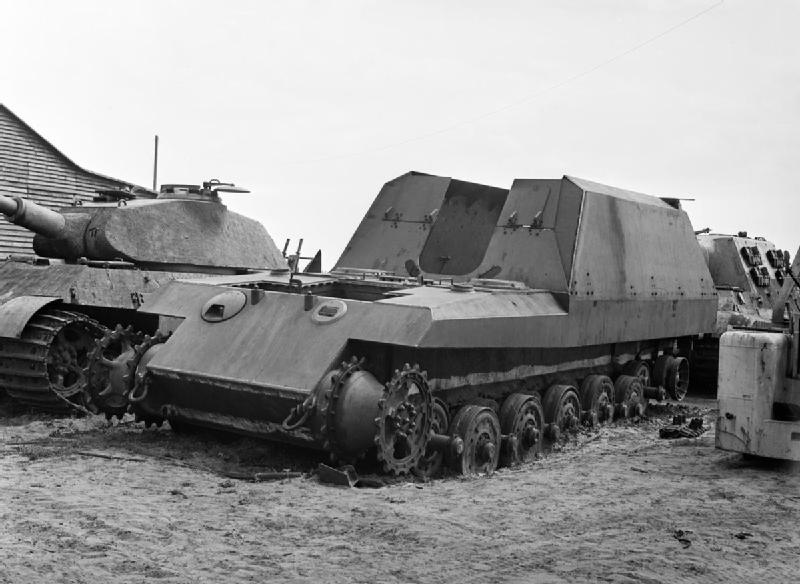




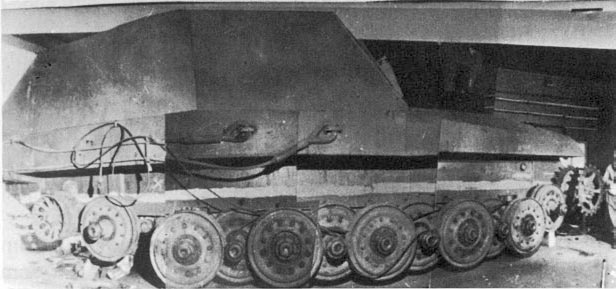
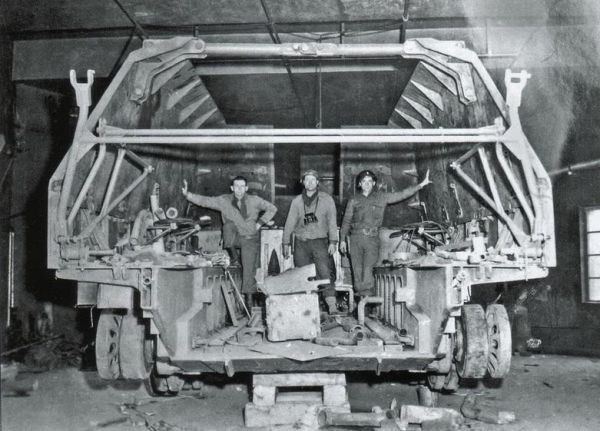
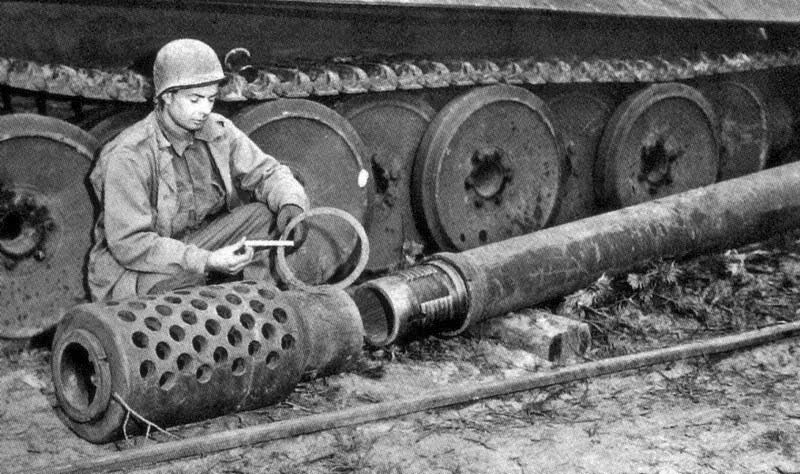

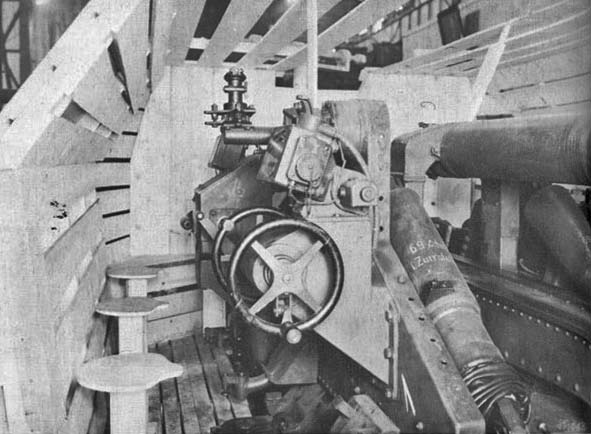


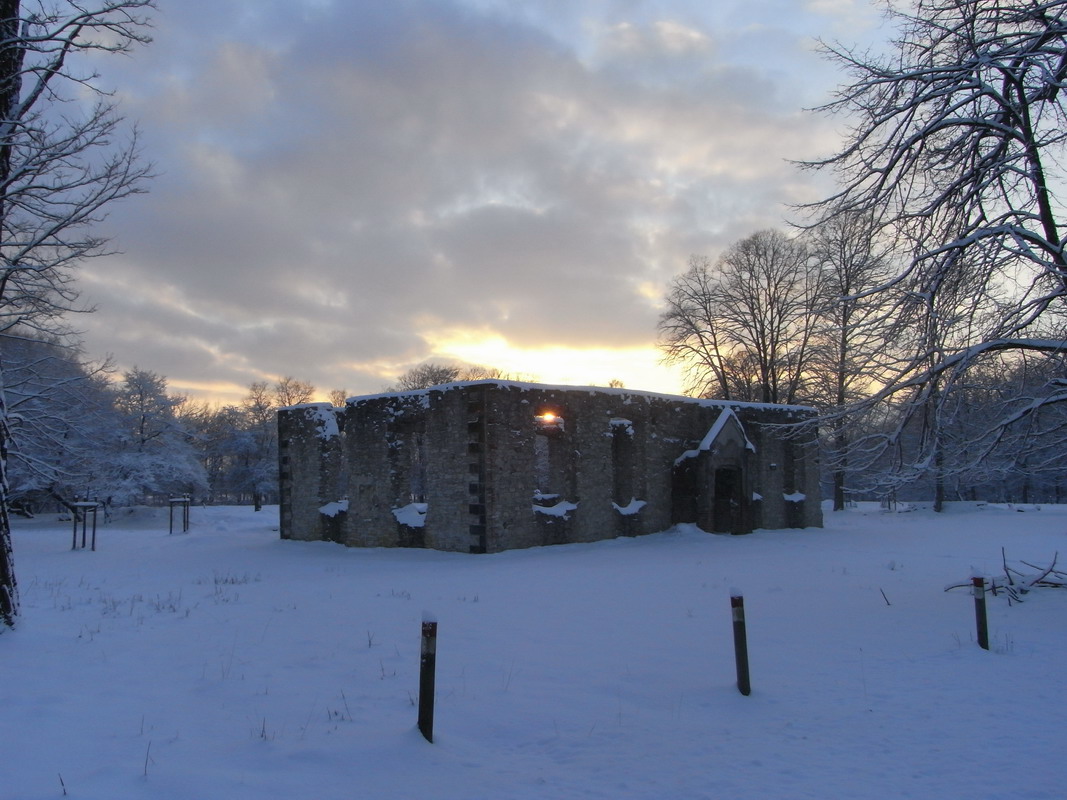
German power :-)
furrrrst
to get banned?
idiot :P
A really nice article, many thanks :) Please write more!
Indeed, very good quality report and sooo many sources!
Great work!
Very interesting read. More of this and less of chat rages, pls :)
Thats…
A really big gun.
SS any invite codes for today?
Nope
so could the grille 17/21 (GW tiger) fire without removing the gun (like in-game)?
GJ Nemo.
Now, if we wanted something more extreme we could get into the R-series but there is extremely scarce info on those.
Immense article, thank you for good read.
Very good article more of these :) thanks
Very interesting, I like the photo with guys inside the half-built vehicle, really shows the scale of it.
Does anybody have a link to that video of the brits testing out german tanks after the war?
http://www.youtube.com/results?search_query=tank+testing+Haustenbeck&sm=3
“Impressive” award for this article: GRANTED
Now, i know what is that round thing at the back of the GW Tiger
I was wondering that for the longest time too.
Not actually a mind-control death ray. Sadly. :c
Nice article, thumbs up from me!
Generally I’m not that interested in the GW-series, but your article was quite interesting, as you found a lot of (for me) “unknown” information…so keep it up :D
Rear information very interesting
thank you for the great read. interesting design. wonder how it woulda performed IRL
305mm howitzer, that’s naval artillery size…
Loading that in hand must be backbreaking…
Imagine the performance in WoT. Prepare for 1 minute + load times.
It was back breaking on the Sturmtiger. It took the whole crew to move the shells around.
Wow, thats an impressive article.
nice work :D
Great article
looks like a tight fit for the crew, but it looks so roomy in game
Very nice article on what some people believe to be a “paper pazer” project, please keep it up, i also like that you have lot of pictures to help the article and a lot of in depth information about various circumstances.
More articles would be very welcomed, especially one about Henschel Panzerversuchsstation 96, Haustenbeck
wow great article!
1. You said that it’s debatable and up to the photos if it used Aufs. B hull. It is indeed – while we could dwell upon if the sloping itself was some transition thing, the machine gun port is a late thing and number of wheels suggest that it was. Of course with negligible armor thickness ;) .
2. I’m not so sure about crew positions. First, there is hull machine gun port. Why would commander sit so low, without proper situation awareness? I think that “gunner” description in your sources is simply general one, for all crewmembers that had anything to do with any gun – so one place would be spent by MG gunner. Why would you want to keep MG instead of having additional fuel tank in this monster is beyond me… There is also the thing that some of the five gunners we have left had to be loaders ;) – that’s another hint from your sources, “gunner” being general term; probably during testing and training positions were interchangable, but even if we leave one mat for elevation crank and other for traverse crank, we have three men in this crampy room running around with shells and charges (ok, probably four, because one man can hand two cranks very well).
1: I could try to find out which hull it is but it might take me some time. Because it just does not say in any of the sources. It just says “components” of Tiger II. Which is why the project was so delayed.
2: I guessed. There were 6 gunners listed and 6 seats in the rear. So it made sense to toss the commander next to the driver since I didn’t have any real reason to toss him to the back of the bus. Plus if your the commander do you really want to ride at the back of the bus?
As a commander, yes, i definitely would. Next to the driver you cannot use rangefinder, you cannot sensibly unbutton and use binocs, you have literally no situation awareness – all you see is bushes. Or earth wall, if it is on prepared hull down position against naval target, as was suggested.
With six seats it only means that crew count is accurate ;) . And still, MG gunner is also a gunner.
Also:
>> hardened roadwheel arms
“hardened” makes no sense, should be “strenghtened” probably as these are two different things, when it comes to technical details. Maybe like changing from Tiger E to Tiger B ones (if they were different) or even some specially designed ones because of increased weight (although, it weighted less than Tiger B so i cannot imagine why there should be different ones, maybe recoil?).
PS: judging by training mockup photos, left sides seats were, front to back: commander, ballistic calculation gunner / firing, gun manipulation gunner, and three right seats were reserved for loading “gunners”.
Hardened Roadwheel arms makes sense to me.
They need to be heat treated. I think. Likely the arms provided originally were for mock up purposes only. This happens all the time and this GW Tiger is a prototype.
Briliant article
and note to WG — change the armour back to 50mm as it is written here :D
(but i am confused by the carbon fibres – are they weaker, shouldnt be i guess)
BTW – really good job
It’s Paderborn, not Panderborn. But nevermind, nice read, thanks for that :).
Dam… your right. Although for whatever reason I do find it spelled as Panderborn. From time to time. I don’t remember which source had it spelled like that.
“In November of 1942 it was decided to use SM-Stahl (carbon steel) in the construction of self-propelled guns in general and that armor plate in the construction of the Versuchsfahrzeug (experimental vehicle) chassis. It was also decided that the front plate of the GW Tiger would be changed from 30mm of Armor plate to 50mm of carbon steel which added 1.5 metric tons to the weight of the SPG and the sides would be 30mm of carbon steel.”
The best estimates suggest that carbon steel would resist half as much as normal, ballistic quality armor steel. So, a 50mm front plate of carbon steel would resist as if it were 25mm of armor-quality steel. This roughly corresponds to the German estimate of equivalency.
The armor hardness numbers of the steel back this up. Doyle mentions all of the different armor steels in one of the Tiger Books.
exelent article very informative about a tank that is seen in WoT but many beleive is another paper project
really good job on gathering information and writing it and also revealing what where the plans for this piece of machinery
waiting to see more like these articles :)
The GW Panther in game is a paper design but there were less formally engineered artists mock ups that can be seen in “Panther and it’s Variants” which are identical to the in game GW Panther. The GW Panther could be much more historically closer to some of the more logical designs but the one in game does provide variety even if its not quite what it might have been had a GW Panther been actually built. (IE the more formal and thought out and designed plan).
30,5-cm-Granatwerfer (Gerät 3-3007)
Caliber: 305 mm
Projectile weight: 160 kg
Muzzle velocity: 430 m/s
Muzzle energy: 14,80 MJ
Range: 10.000 m
Gas pressure: 900 kg/cm²
Length of tube: 510 cm
Elevation: +40°/75°
Traverse: 360°
Recoil: 850 mm
Weight: 9.300 kg
42-cm-schwerer Granatwerfer Sf 1 (Gerät 3-4204)
Caliber: 420 mm
Projectile weight: 400 kg
Muzzle velocity: 385 m/s
Muzzle energy: 29,62 MJ
Range: 10.000 m
Gas pressure: 900 kg/cm²
Length of tube: 515 cm
Elevation: +40°/75°
Traverse: 360°
Weight: 13.000 kg
Source: Waffen-Revue 34
Thanks.
Range seems to be about what I was going to be guessing based upon the Skoda 30.5 from WW1.
Holy mother of god… Found a copy of the magazine and looked at the photos from the Skoda works.
30.5cm is very impressive. =)
I think we need her in game to lend a helping hand to the Axis…
http://i26.photobucket.com/albums/c131/3dbattleart/TIGER2%20GRILLE%2017CM/cradleandbarrell.jpg
another great picture
Wonder how I missed finding that photo. Spent several days looking for photos… =) Thanks for the photo.
From that photo it is most likely at the Henschel Panzerversuchsstation 96, Haustenbeck.
As the 21cm is very different from a normal one.
Normal
http://upload.wikimedia.org/wikipedia/commons/c/c8/21cmM%C3%B6rser18FortSillRear2005.jpg
its writen “Kanone” btw
Typos happen. Plus it is spelled correctly in the name at the bottom of the article. =)
yes, i did a typo too. *written*
i thought he thinks its written like the english cannon.
ah you wrote it :)
For the next article we have 3 options
http://www.quicksurveys.com/s/w6KAc5 Next Article Survey so give me some ideas
Char B1 and B1-bis
M2A4 Light Tank in WW2
M40/M43 in WW2
Nemo sure loves his Arties.
GJ you “scumbag” lover ^^
Well anyone can write about Tigers, Panthers, Hetzers and Pershings. So I went with something different.
What about Priests and Bishops? What do you have on Allied Artillery?
Not to say Axis Arty isn’t interesting, but I’m sure both sides have interesting things.
I have been using the research for out clans historical setups lists for Historical Battles. We have a custom XVM mod for the battles. British/UK tanks are on the list of things to do.
Although there is quite a lot written about UK tanks. It is generally though, much more scattered. But I have been collecting books on it. US SPGs are roughly well covered but the data is like the UK a bit scattered. Was driven crazy a few times while I tried to track down historical ammunition load outs (number of rounds) for the M40/M43 and some technical details for the M12 and M53/M55. Complete pain in the ass but worth it.
According to the Article Survey it looks like people want to know about the M40/M43 which will be challenging in terms of operational details because the unit and army that used them in Europe generally did not distinguish between the M40/M43 and the M12. Difficult but doable.
The survey is up for a few more days.
NEMO.
I only have 59% if my battles in SPGs.